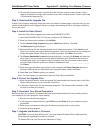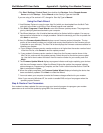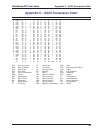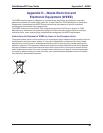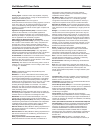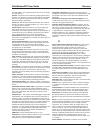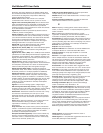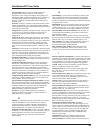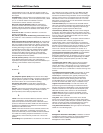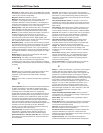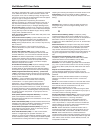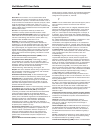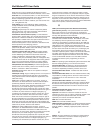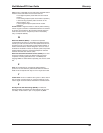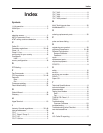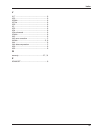
Glossary
44
MultiModemZPX User Guide
facility into two or more channels by allotting the common
channel to several different information channels, one at a time.
Time Slot: One of 24 channels within a T1 line. Each channel
has a 64 Kbps maximum bandwidth. “Time slot” implies the time
division multiplexing organization of the T1 signal.
Toll Call: A call to a location outside of your local service area
(i.e., a long distance call).
Tone dialing: One of two methods of dialing a telephone,
usually associated with Touch-Tone® (push button) phones.
Compare with pulse dialing.
Topology: Physical layout of network components (cables,
stations, gateways, and hubs). Three basic interconnection
topologies are star, ring, and bus networks.
Transmission Control Protocol (TCP): A communications
protocol used in Internet and in any network that follows the US
Department of Defense standards for internetwork protocol.
TCP provides a reliable host-to-host protocol between hosts in
packet-switched communications networks and in
interconnected systems of such networks. It assumes that the
Internet protocol is the underlying protocol.
Transport Layer: Layer 4 of the Open Systems Interconnection
(OSI) model; provides reliable, end-to-end delivery of data, and
detects transmission sequential errors.
Transport Protocol Data Unit (TPDU): A transport header,
which is added to every message, contains destination and
source addressing information that allows the end-to-end
routing of messages in multi-layer NAC networks of high
complexity. They are automatically added to messages as they
enter the network and can be stripped off before being passed
to the host or another device that does not support TPDU’s.
Trunk: Transmission links that interconnect switching offices.
TSR (terminate and stay resident): A software program that
remains active and in memory after its user interface is closed.
Similar to a daemon in UNIX environments.
Tunneling: Encapsulation data in an IP packet for transport
across the Internet.
Twisted pair wiring: A type of cabling with one or more pairs of
insulated wires wrapped around each other. An inexpensive
wiring method used for LAN and telephone applications, also
called UTP wiring.
Type A: The upstream (USB Type A) connector. A Type A
Connector is for those devices on which the external cable is
permanently attached. Connectors for USB come in two
designs: the 'A' and 'B' types. Upstream connections (computer,
hub input, etc.) are made using the 'A' type connector,
downstream connections (peripherals, hub outputs) are made
using the 'B' type connector. The USB spec defines two types of
connectors to protect the bus from illegal topologies (e.g.,
connecting one downstream port back to another, etc.) and to
prevent end-user confusion. This allows end users to easily
attach the correct connectors to peripherals and ports. Type A
Plug and receptacle are to be used for those devices on which
the external cable is permanently attached to devices such as
Keyboard, mouse and hubs. Series B Plug and receptacle are
to be used for those devices that require an external detachable
cable such as printers, scanners and modems.
Type B: The uplink (USB Type B) connector. A Type B
Connector is for detachable external cables. Allows for double
ended cable assemblies. Connectors for USB come in two
designs: the 'A' and 'B' types. Upstream connections (computer,
hub input, etc.) are made using the 'A' type connector,
downstream connections (peripherals, hub outputs) are made
using the 'B' type connector. The USB spec defines two types of
connectors to protect the bus from illegal topologies (e.g.,
connecting one downstream port back to another, etc.) and to
prevent end-user confusion. This allows end users to easily
attach the correct connectors to peripherals and ports. Type A
Plug and receptacle are to be used for those devices on which
the external cable is permanently attached to devices such as
Keyboard, mouse and hubs. Series B Plug and receptacle are
to be used for those devices that require an external detachable
cable such as printers, scanners and modems.
U
UART (Universal Asynchronous Receiver/Transmitter)
(pronounced “you art”): A chip that transmits and receives
data on the serial port. It converts bytes into serial bits for
transmission, and vice versa, and generates and strips the start
and stop bits appended to each character.
UHCI (Universal Host Controller Interface): The USB
Universal Host Controller Interface. All transfers on the USB
are initiated by the host system’s host controller. The host
controller is responsible for controlling traffic on the USB and
can be appropriately programmed to transfer data to and from
USB devices. This is typically a PCI device that can be
programmed to run a given schedule of transfers on the USB
and bus master the results into memory for processing by the
host software. There are currently two standards for host
controllers: OpenHCI (OHCI or Open Host Controller Interface)
and UHCI (Universal Host Controller Interface). Both these
standards define register level interfaces of the host controller
to PCI bus. Bandwidth allocation over the USB is software
managed and is done by the programming of the host
controller.
UNIX: An operating system developed by Bell Laboratories that
features multiprogramming in a muti-user environment.
Universal Serial Bus: A collection of Universal Serial Bus
devices and the software and hardware that allow them to
connect the capabilities provided by functions to the host.
Universal Serial Bus Device: Includes hubs and functions.
See device.
Universal Serial Bus Driver: The host resident software entity
responsible for providing common services to clients that are
manipulating one or more functions on one or more Host
Controllers.
Universal Serial Bus Interface: The hardware interface
between the Universal Serial Bus cable and a Universal Serial
Bus device. This includes the protocol engine required for all
Universal Serial Bus devices to be able to receive and send
packets.
Unshielded Twisted Pair (UTP): Telephone-type wiring.
Tansmission media for 10Base-T.
Upstream: The direction of data flow towards the host. An
upstream port is the port on a device electrically closest to the
host that generates upstream data traffic from the hub.
Upstream ports receive downstream data traffic.
USB: See Universal Serial Bus.
USBD: See Universal Serial Bus Driver.
USB Performance categories: Low Speed (Interactive Devices
at 10-100 Kb/s); Medium Speed (Phone, Audio, Compressed
Video at 500Kb/s - 10Mbp/s); High Speed (Video, Disk at 25-
500 Mb/s)
V
V.25bis: An ITU-T standard for synchronous communications
between a mainframe or host and a modem using HDLC or
other character-oriented protocol.



